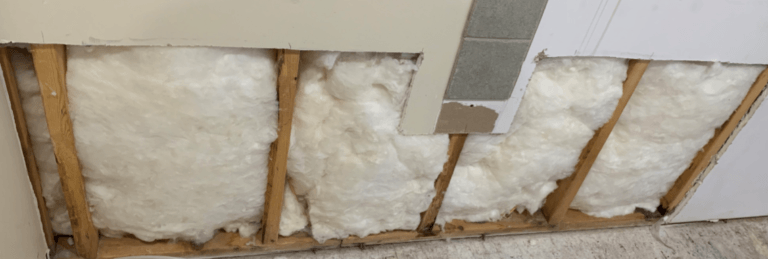Drywall for Kitchens: What Works Best
When it comes to renovating or constructing a kitchen, drywall choice plays an incredibly significant role, impacting aesthetics, functionality, and long-term durability. Having gone through my own kitchen remodel a few years back, I vividly remember standing in the home improvement store, overwhelmed by the myriad of drywall options available. The solution wasn’t just any drywall; finding the most suitable type for a high-moisture environment like a kitchen was crucial.
In this article, we’ll explore the best drywall options for kitchens, backed by real-world experience and expert insights, ensuring you make informed decisions as you embark on your kitchen project.
Why Choosing the Right Drywall Matters
My Experience with Moisture Resistance
During my kitchen remodel, I opted for standard drywall, thinking it would suffice. However, after a few months, minor water stains began to appear around the sink area. The kitchen’s typical humidity, combined with occasional splashes, demanded much more than regular drywall could handle. This experience drove home the importance of selecting drywall specifically designed for moisture-rich environments.
The Risks of Regular Drywall
Regular drywall tends to absorb moisture, leading to mold growth, structural integrity loss, and unsightly stains. This is especially critical in kitchens, where heat and humidity can fluctuate significantly. Thus, understanding what works best in such conditions is imperative.
Types of Drywall Suitable for Kitchens
When selecting drywall for your kitchen, consider the following types:
1. Moisture-Resistant Drywall (Green Board)
Details:
- Composition: Made with a water-resistant core and a moisture-proof paper covering.
- Where to Use: Ideal for areas with high humidity, such as kitchens and bathrooms.
Why It Works Best:
Moisture-resistant drywall, commonly known as green board, is engineered for durability in humid environments. It’s particularly effective when installed behind tiled areas or near sinks, protecting against prevalent water damage.
2. Mold-Resistant Drywall (Purple Board)
Details:
- Composition: Contains special additives in the core to repel both water and mold.
- Where to Use: Suitable for high-moisture areas where mold growth is a concern.
Expert Insight:
According to the Gypsum Association, mold-resistant drywall can reduce the risk of infestations compared to standard and even moisture-resistant boards. This makes it a top choice for kitchens, where spills and vapor are common.
3. Fire-Resistant Drywall (Type X)
Details:
- Composition: Incorporates glass fibers and additives to provide a fire rating.
- Where to Use: Good for areas that require enhanced fire resistance, typically near stove installations.
Why It Works Best:
While not specifically focused on moisture, fire-resistant drywall is essential in kitchens due to potential fire hazards. Types X and C boards can improve safety without sacrificing structural integrity.
Application Methods for Drywall in Kitchens
Choosing the right drywall is just the beginning. Proper installation techniques are equally crucial to ensure longevity and performance.
Professional Contractor Perspectives
I consulted several seasoned contractors during my remodel, and one common point was the inclusion of a moisture control system behind drywall. This approach includes:
- Vapor Barriers: Installing a vapor barrier can significantly reduce moisture permeation from kitchen activities.
- Seam Taping: The use of paper or mesh tape alongside appropriate compound can minimize joint moisture exposure.
For those undertaking the task themselves, I recommend using these crucial tools:
- WEN Drywall Sander: For achieving a smooth finish, consider a high-quality drywall sander to prepare your surfaces adequately. Check it out here!
Installation Tips
- Hang Your Sheets Vertically: This is often recommended in kitchens to minimize seams and potential water intrusion.
- Use the Right Fasteners: Opt for galvanized or stainless steel screws (1 1/4" screws or 1 5/8" screws) to prevent corrosion from moisture.
Common Mistakes to Avoid
1. Using Regular Drywall
Many homeowners, like I did initially, often underestimate how much their kitchen environment can affect drywall performance. Always choose moisture-resistant or mold-resistant variants in kitchens.
2. Neglecting Proper Sealing
Improper sealing around fixtures and joins can lead to water damage over time. Ensure that you use quality tape and joint compound—options like 3.5 Qt All Purpose Compound or 3.5 Qt Plus 3 Compound.
3. Skipping Prep Work
Preparation is key. Make sure the studs are clean, dry, and aligned properly to ensure the best support for your drywall panels.
FAQs about Kitchen Drywall
1. Can I use standard drywall in the kitchen?
It is not advisable to use standard drywall in kitchens due to its vulnerability to moisture and mold. Instead, opt for green or purple board.
2. How do I protect drywall from kitchen humidity?
Using a vapor barrier behind the drywall, and proper sealing techniques during installation can notably decrease moisture risks.
3. Is mold-resistant drywall worth the cost?
Absolutely. Mold-resistant drywall can save you from costly repairs and health issues in the long run, making it an excellent investment for kitchen applications.
Conclusions and Key Takeaways
Choosing the right drywall for your kitchen is crucial for ensuring its longevity and aesthetic appeal. Emphasizing the use of moisture-resistant and mold-resistant materials will safeguard your project against potential water damage and mold growth. Moreover, combining these choices with proper installation techniques will yield the best results for your kitchen remodel.
As you dive into your drywall project, consider consulting with professionals or utilizing quality products that can help you achieve a durable finish. Remember the lessons I learned during my own kitchen renovation, and avoid the common pitfalls.
What experiences have you had with drywall in your kitchen? Do you have any tips or products you swear by? Share your thoughts in the comments below!
Share & Resources
If you found this guide helpful, please share it on Pinterest, Facebook, or Reddit! Your support helps others find useful drywall solutions.
Contractors, home improvement bloggers, and DIY forums: Feel free to link back to this article to help your audience make informed choices about drywall for kitchens.
Together, let’s empower our communities with the knowledge to enhance our homes, one drywall project at a time!



